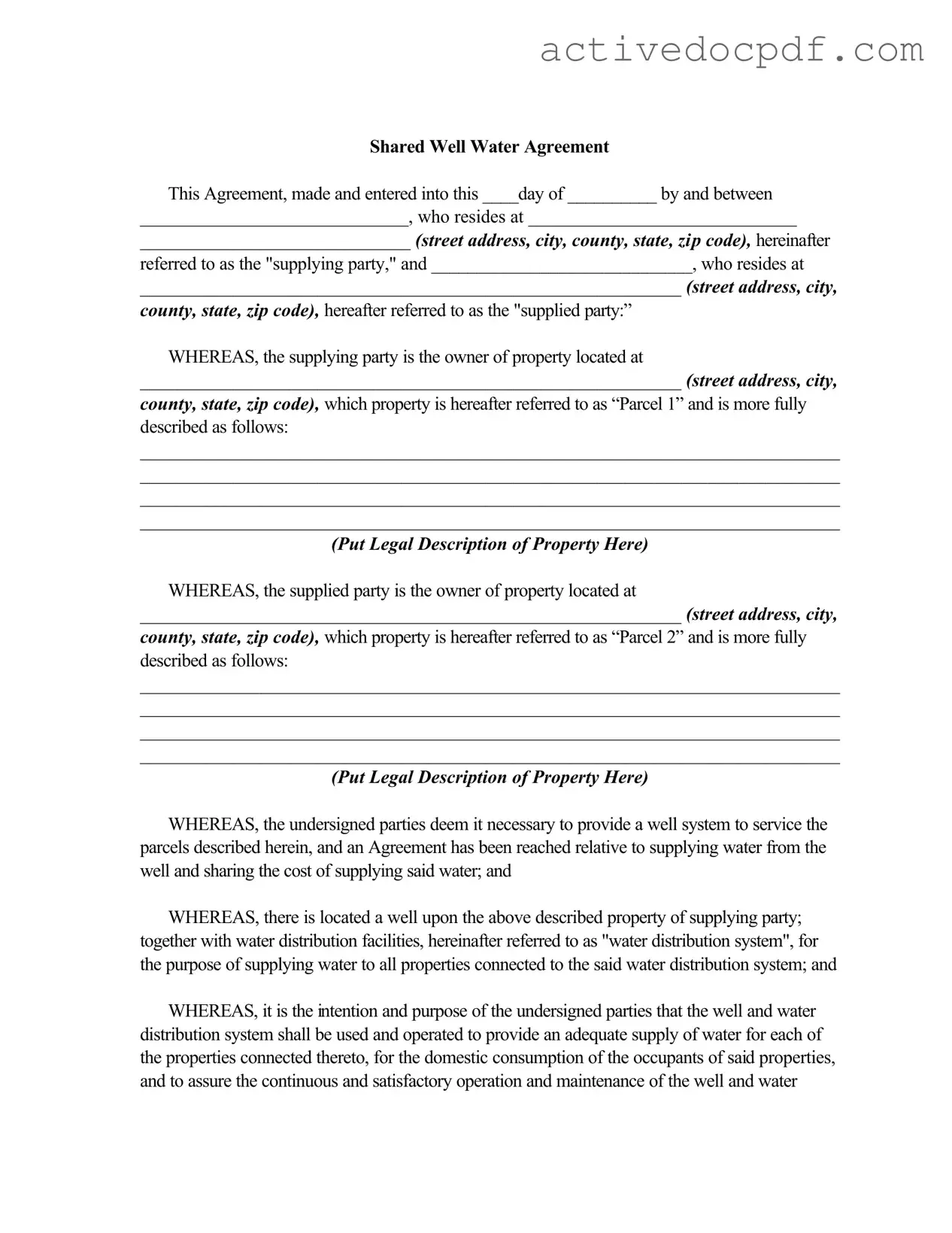What is a Shared Well Agreement?
A Shared Well Agreement is a legal document that outlines the rights and responsibilities of two or more property owners who share a well and its water distribution system. This agreement ensures that all parties have access to water for domestic use and that the costs associated with the well's maintenance and operation are shared fairly. It serves to protect the interests of both the supplying party and the supplied party, providing clarity on how the well will be used and maintained.
Who is involved in a Shared Well Agreement?
The agreement typically involves two parties: the "supplying party," who owns the property where the well is located, and the "supplied party," who owns a neighboring property that will utilize the water from the well. Both parties must agree on the terms outlined in the agreement to ensure a smooth and cooperative relationship regarding the use of the well.
What are the main responsibilities of the parties involved?
Each party has specific responsibilities outlined in the agreement. These include:
-
Paying an annual fee for the use of the well and sharing costs for maintenance and repairs.
-
Maintaining their respective water pipes and ensuring they are in good working condition.
-
Obtaining consent from the other party before incurring expenses for maintenance, unless it’s an emergency.
-
Repairing or replacing any shared infrastructure as necessary.
By adhering to these responsibilities, both parties can ensure a reliable water supply and maintain a positive relationship.
What happens if one party fails to pay their share?
If a party fails to pay their share of the costs associated with the well, the supplying party has the right to suspend water service until the overdue payments are made. This provision emphasizes the importance of timely payments and encourages both parties to meet their financial obligations under the agreement.
Can the Shared Well Agreement be terminated?
Yes, the agreement can be terminated under specific conditions. If the well becomes contaminated or no longer provides adequate water, or if another water source becomes available, the parties can terminate their obligations. Termination requires a written statement to be filed at the appropriate county office. Once terminated, the parties will disconnect from the well system and will no longer be responsible for shared expenses.
What should I do if I have a dispute with the other party?
In the event of a dispute under the Shared Well Agreement, the parties are required to resolve it through binding arbitration. Each party will select an arbitrator, and those arbitrators will choose a third. This process helps ensure that disputes are handled fairly and efficiently, without the need for lengthy court proceedings.
